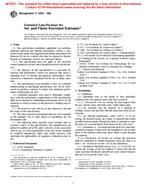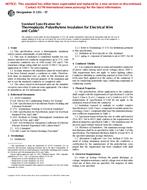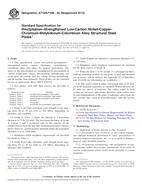1.1 These test methods cover the measurement of the relative degree of openness or degree of fiberization of milled asbestos fiber by air permeability instruments.
1.2 Method A is the recommended procedure and describes a determination by means of the Rapid Surface Area apparatus. This test method is limited to fibers with an effective surface area in the range from 10 to 250 dm²/g (490 to 12000 ft²/lb).
1.3 Method B is an alternative procedure and covers the use of the Dyckerhoff apparatus. This test method is limited to fibers within the range from 10 to 600 Dyckerhoff seconds.
1.4 Only those asbestos specimens which are of similar specific gravities will bear strict comparison by these air permeability methods since differences in density result in specimens being tested under different conditions of porosity.
1.5 Samples containing excessive quantities of nonfibrous particles or contaminants will not give reliable or meaningful results.
1.6 The values stated in SI units are to be regarded as the standard. The inch-pound units in parentheses are provided for information only.
1.7 Breathing of asbestos dust is hazardous. Asbestos and asbestos products present demonstrated health risks for users and for those with whom they come into contact. In addition to other precautions, when working with asbestos-cement products, minimize the dust that results. For information on the safe use of chrysotile asbestos, refer to “Safe Use of Chrysotile: A Manual on Preventive and Control Measures.”
This standard does not purport to address all of the safety concerns, if any, associated with its use. It is the responsibility of the user of this standard to establish appropriate safety and health practices and determine the applicability of regulatory limitations prior to use.
Product Details
- Published:
- 06/01/2006
- Number of Pages:
- 10
- File Size:
- 1 file , 200 KB


